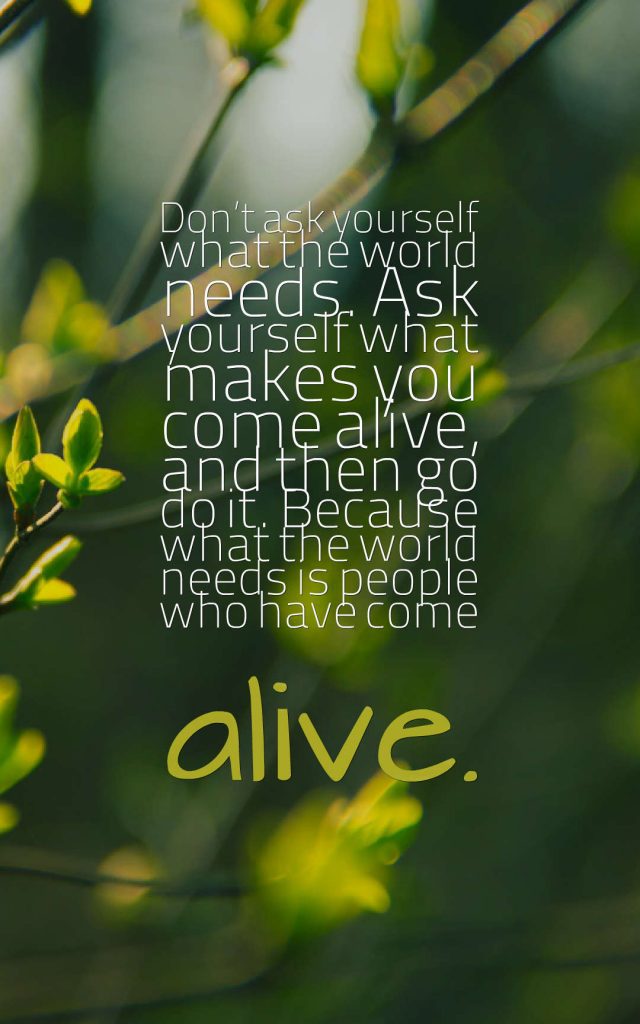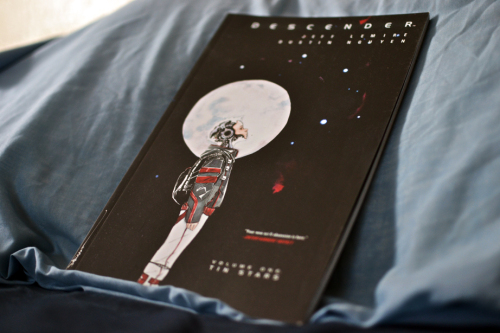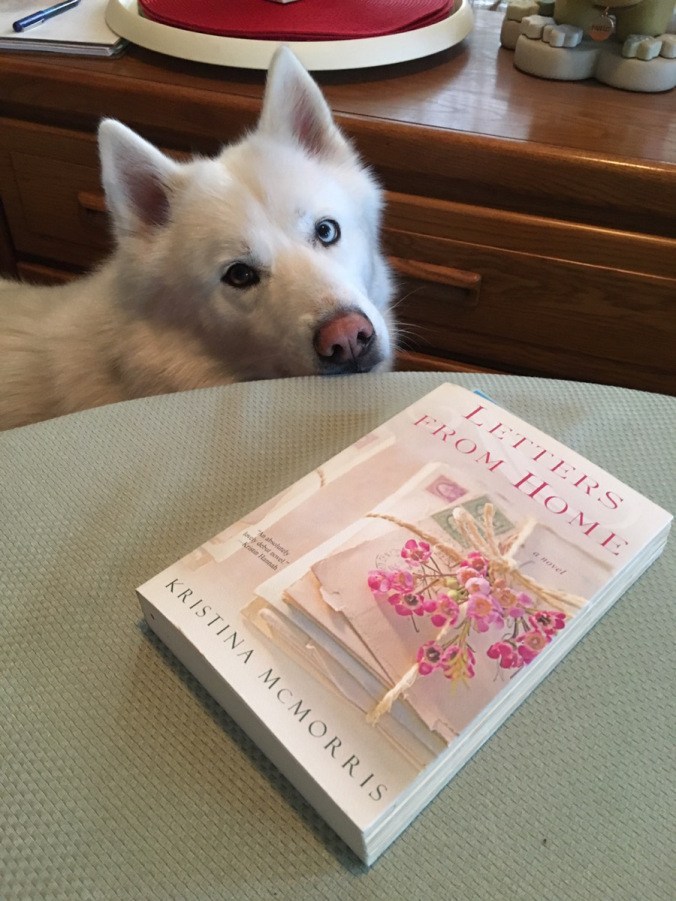It shouldn’t be revolutionary, or even noteworthy, to see cellulite, stretch marks or blemishes in a photo or painting of a woman. Yet in the society we live in, even small gestures of inclusiveness in terms of women’s bodies should be celebrated as much bigger acts of rebellion, or even revolution. Unfortunately the media isn’t the only place where there is a slim (pun intended) list of what exactly can be labelled as beautiful, as many creatives can easily fall into the trap of making art which features solely what have been deemed as acceptable or desirable body types. The female form has been a focal point for artists for hundreds of years (you’ve probably heard of art being catered to the ‘male gaze’), but you may have noticed that in well known art this form is, more often than not, a slender one in one of approximately 4 tones of pinky-beige. This of course is not representative of all women’s bodies, or of the artists who make real and relatable artworks of it, which seem to fail to receive the same notoriety.
To combat this; here are three women pushing body positivity through their craft, demanding representation in the art world and in turn, change within the wider world.
LINDO KHANDELA
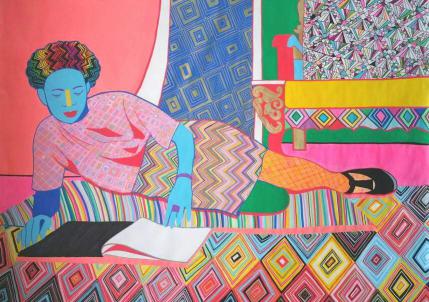
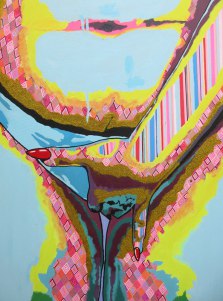
Lindo Khandela is a UEL graduate, currently studying at the Royal College of Art. Her paintings are vibrant, immersive and feature so much colour and pattern that they appear to have depth and texture extending far further than a painting should. With these qualities in mind, it is no surprise that Lindo’s portrayal of women in her painting are equally as vivid; refusing to be shrinked or silenced.
“The everyday woman is not without so called ‘flaws’. We get stretch marks, cellulite etc. And these things need to be normalised because they are… normal. I choose to portray women in that manner because I want any and every woman to be able to relate and be empowered by my work.”
Lindo was raised in South Africa, and believes this has had a great impact on her art, especially in relation to the women she paints: “The universal standard of beauty is for the most part, the European standard of beauty. In celebrity culture, social media etc, we continuously observe a particular body type etc that is seen as desirable. In my native land, South Africa, I’ve observed a more diverse representation as it is a majority black country but I still find that within that diversity there is still the influence of the European standards of beauty. It can be frustrating because it sometimes feels as though those of us who don’t fit that standard of beauty just have to accept and assimilate it to fit in.”
“If society is continuously shown the same thing, it becomes the norm. We live in a diverse world, and if diversity was normalised everyone would feel represented and such issues wouldn’t even be a topic of discussion There needs to be more realness. We need to see women with spots, stretch marks, cellulite, body hair, diversity in skin tones and in body shapes and sizes. If diversity was normalised, girls and women wouldn’t feel this constant pressure to conform to what society tells them to look like.”
PALOMA DEMANET
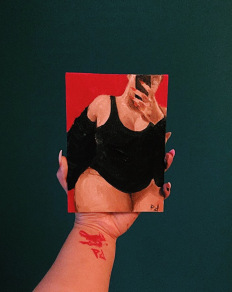 Processed with VSCO with c1 preset
Processed with VSCO with c1 preset 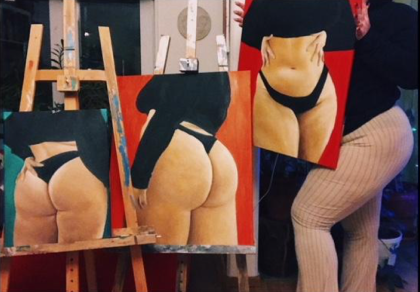
Paloma Demanet is a Sweden based artist whose work has gained some well deserved attention by the intrinsic relatability of her art. She turned a ‘gone wrong’ painting of Skepta into an abstract portrait which the artist posted on his Twitter, and has transformed her own selfies and booty pics into works of art that worship the female body in an authentic manner that isn’t sexualised or embellished.
“I’ve always thought that showing different type of bodies has been important. The same way as it is important with representation of race, we need with bodies. I’ve had so many girls write me and tell me about their insecurities and how my art helped them realize that even though they’re not skinny or perfect, they can be a beautiful piece of art too. So just imagine all the girls out there who think they’re not beautiful or worthy just because of lack
of representation.”
Representation matters, and the reaction to Paloma’s work is definite proof of this. Paloma hadn’t always focused on painting women, but these positive responses she received from other girls encouraged her to pursue this variety of art.
“Honestly me painting women is kind of a new thing. I started to paint my body just because I wanted to help myself feel beautiful and help me love myself.I started with a painting of my belly because that’s one of my biggest insecurities. I never knew the response for it would be so big and I got crazy amount of love. Girls started sending me messages thanking me for helping them accept themselves…I still think it’s crazy the amount of love I got for a small painting of ME.”
PIPPA ALICE
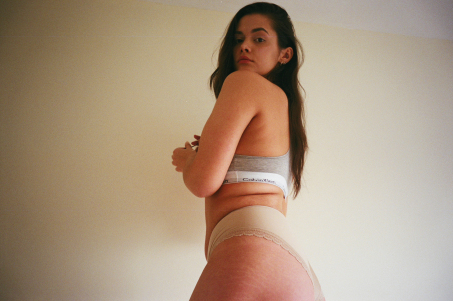
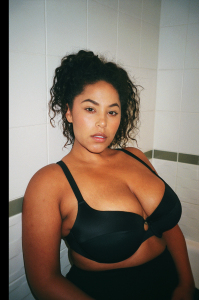
Pippa Alice is a photographer from London, who has worked on various editorial shoots and also has a highly distinguishable and feminine-focused brand of personal photography. Pippa’s personal work comes with the subtle notion that she is a photographer who cares about women and aims to make them feel comfortable. The lighting is generally warm, soft and forgiving, though you get the impression that Pippa’s models feel beautiful in front of her lens regardless of this.
“Honestly and truly I try to embody my own personal beliefs and self love throughout my subjects and work; glamorous and a bit unpolished. If you know me you know how I love to take a bum pic in some crazy lingerie because I just don’t give a shit. Which is why I fell into shooting ‘raw’ images of beautiful women. However when I originally began shooting girls three years ago I was never trying to portray ‘real women’, because I dislike the phrase. It’s more commonly used to describe their appearance. A real woman to me is someone who oozes admiration for herself in its highest form. I’ve had women approach me to photograph them less clothed, not to be sexual but to feel a sense of power and beauty in their natural form and I think they perhaps trust me – as to me more than anything it is important for themselves to look at that photo and feel fabulous. I don’t care if people like the image or not, if the subject is in love with herself then I’ve done a good job.”
Capturing feminine energy and honouring insecurities is something highly regarded personally for Philippa, and it shows through her work. “Growing up I had struggled with a serious illness that greatly affected my self esteem and how I felt about my appearance. Since I’m older I embrace myself and flaws and love to encourage people to do the same. Most of the time women love to work with other women, they love to support, they love to laugh, be emotional, be sexy because it’s what we do best and it’s great to capture on camera. As for the future, I would like to see more disabled people feature more frequently in advertising and shoots as that’s not something we see enough of and is a case close to my heart. This is something I will be exploring soon with my own work.”
I for one can’t wait to see this, and to witness the change that it inspires alongside inclusive art like Lindo and Paloma’s. To support and find out more about the artists mentioned, you can follow the links below:
PHILIPPA | www.pippa-alice.com | @philippa_alice
LINDO | www.artrabbit.com/people/lindo-khandela/artist | @khandelaart
PALOMA | www.palomademanet.bigcartel.com | @palomadelaghetto
Share this:
